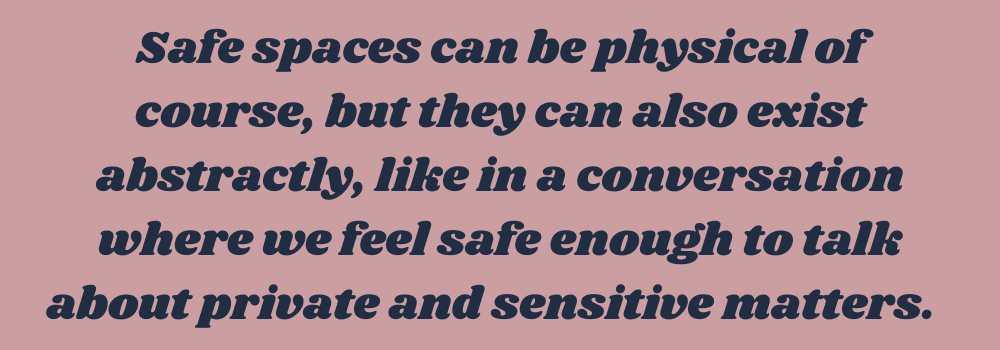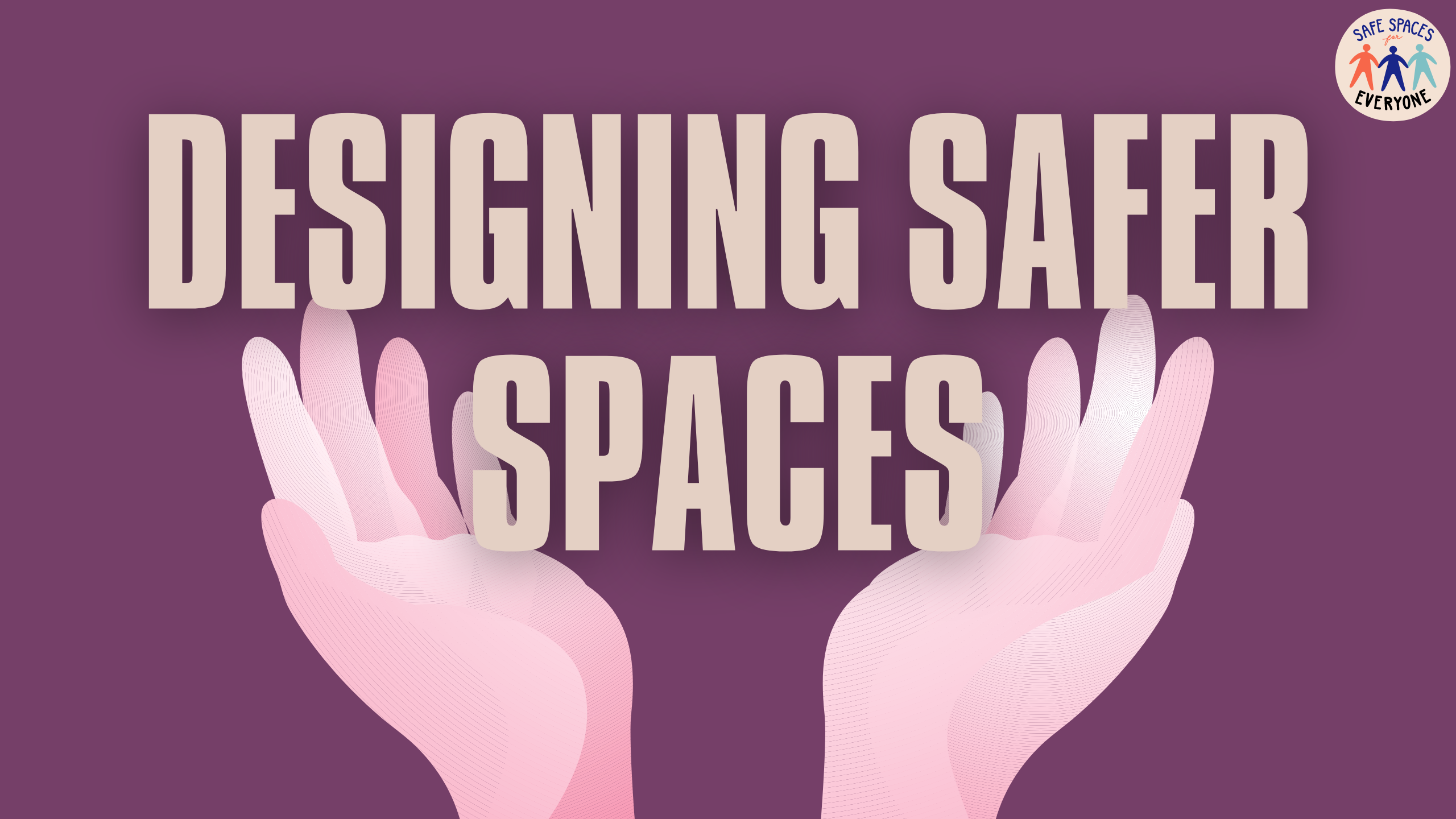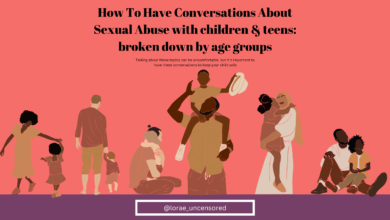
A safe space is a sanctuary created by, with, and for any marginalized group that is in need of support and a space to share experiences.
In acknowledgement of the fact that not everyone feels perfectly safe and welcome under the same conditions, we can certainly strive to make our environments safer and more inclusive. Safe spaces can be physical of course, but they can also exist abstractly, like in a conversation where we feel safe enough to talk about private and sensitive matters.
These spaces of solace are an important mental health tool of self-care, affording us a moment to let down our cool without fear of judgment in the presence of people who understand our plights. This helps build resilience.
How to create and maintain a safer space:
- Always use inclusive language
- Consider labels and pronouns etc
- Any materials used should also reflect this
- Practice non-judgemental listening
- Recognize cultural differences
- Maintain positive body language
- The personal is political
- Consider intersectionality
- Power structures and systems of oppression play out in peoples’ lives
- Be clear about your own politics and privilege
- Acknowledge your own biases
- Use grounding/breathing/self-care practices in an integrated way
- Be careful of using rituals for novelty
- Be intentional about chosen practices and incorporating them consistently in meaningful ways
- Be prepared to respond to emotions
- Accept that deep feelings come up and are often a necessary component of healing and activism

Things to consider for organized groups, businesses and schools:
- Rules– creating a set of rules around respect and confidentiality helps increase a sense of security within the group
- Roles- these could rotate but having specified roles can help to make the time run more smoothly
- Access – think about the factors that might block someone’s ability to join or enjoy the safe space (is it wheelchair accessible? Is your media/space explicitly inclusive? etc)
- Wellbeing- Have a therapist and a set of resources available in case a participants needs further help or support
There are many wonderful local organizations and people working hard to create designated safe spaces but many in our community who need them the most are unaware that they exist. So I’d like to invite you to join me in creating a working list in the comments. Here are a few I really appreciate:
The Village at Bermuda College
Family Centre
Spirit House
Check the comments for more.
If you recognize the absence of, or the need for a safe space, in your environment, perhaps its time to create one. If not you, then who?






